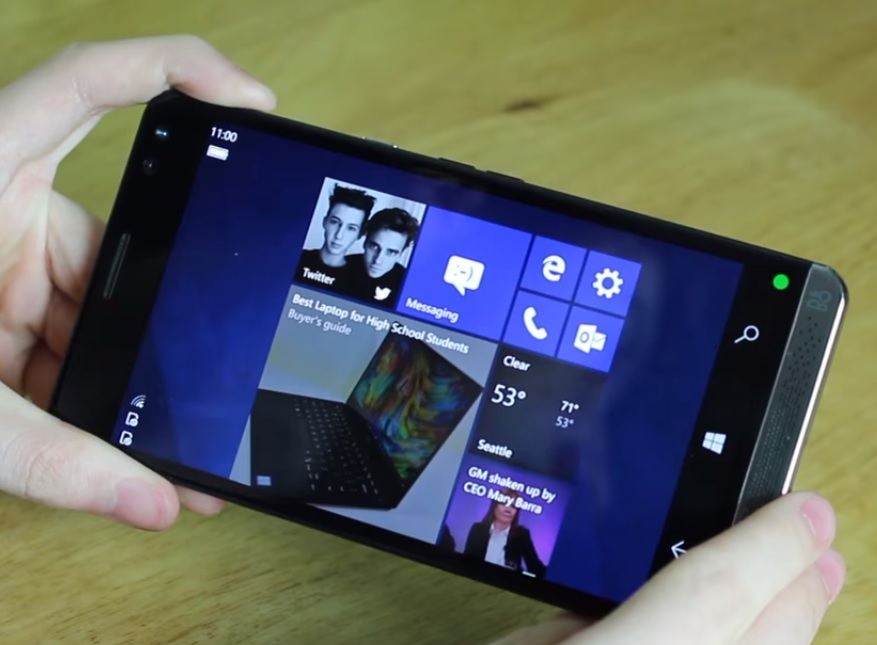Two years after Microsoft introduced Continuum for Windows smartphones, the project is still waiting to deliver the experience that was initially promised. Continuum was supposed to bring a desktop-like experience to mobile computing, but it didn’t do a lot of the things that it currently can. A lot has happened since then, and Continuum now has additional features, including CShell, or Composable Shell, which promises to bring the originally envisioned desktop experience to the Windows 10 Mobile ecosystem.
What is CShell and How Does it Tie in with the Windows Mobile Story?
Windows Shell is essentially a user interface that accesses an operating system’s services. It’s called a shell because it forms a layer around the kernel, which is the core of any operating system. For various device form factors, different shells are required.
CShell, on the other hand, is a dynamic shell that can adapt to any device in real-time. It comprises sub-components or modules that can transition from one to another, depending on the form factor of the device on which the UI is to be displayed.
Here’s a great video that shows exactly what that will look like:
As you can see, when used in the context of Continuum on Windows Mobile devices, CShell allows Windows components to align themselves based on the device that’s being used for the output. More importantly, it allows Windows 10 Mobile devices to deliver a much more realistic desktop experience on a PC or monitor than ever before.
Some of the newer Continuum features brought by CShell include multi-window support, Window re-sizing, Toast notifications, system tray, a desktop-like Start menu and so on.
In the future, Microsoft may want to bring CShell to PCs as a replacement for the traditional Windows shell, but not right away. The CShell journey is much like that of the Fluent Design System. Rather than being a one-time roll-out on a single Windows 10 update, it’s still a work in progress, where features will be incrementally introduced into various builds and major updates of Windows 10.
Why is this Significant for Windows 10 Mobile?
Continuum was touted as a big deal when it was introduced by Microsoft because it effectively extended Windows smartphones to desktop. At least, that’s what it was supposed to do. Unfortunately, that never happened. However, now that Microsoft has made significant progress on CShell, and has even showcased it at their events, it looks like the first key features of CShell are ready to see the light of day.
As for Windows 10 Mobile, that version is only getting minor updates on the Feature2 branch, where it’s been indefinitely parked. Future Windows smartphones, however, are likely to have CShell at their heart.
One of the internal projects that Microsoft is currently working on is a hardware product with a new version of Windows Mobile. What’s likely to happen is that older Windows 10 Mobile devices won’t get future updates, but there will be a new range of Windows 10 smartphones running the new flavor of Windows 10 Mobile. The timeline for this is about a year or more. Sources say that it is well beyond the development stage, so that time frame looks about right.
That’s very significant for the die-hard Windows 10 Mobile community, but it’s not all good news. The good news is the fact that they’ll be able to continue on a new version of Windows 10 Mobile; the bad news being that they’ll most likely have to upgrade their devices to be able to do that.
Microsoft is also pushing in another direction with the Surface Phone and Windows 10 on ARM initiative that is likely to use the same Composable Shell to deliver device-specific experiences with essentially the same Windows 10 operating system. That provides an entirely different experience, bringing desktop capabilities to smartphones.
Microsoft is dead set on the mobile devices market, specifically the smartphone segment. That’s why they’re taking multiple routes to get there. The new Windows 10 Mobile version will be capable of delivering a more robust mobile experience on larger screens via CShell and Continuum, while the Surface Phone concept device will bring more desktop capabilities to smartphone-sized devices.
In essence, the plan seems to be to blur the lines between mobile and desktop experiences, and they’re attacking the problem from every direction possible. It will probably take another year or two for all of this to play out but, eventually, there should be a robust ecosystem of devices around Windows 10 and Windows 10 Mobile. The first of these are likely to come out as early as the end of 2017, according to reliable sources.
Thanks for visiting! Would you do us a favor? If you think it’s worth a few seconds, please like our Facebook page and follow us on Twitter. It would mean a lot to us. Thank you.



